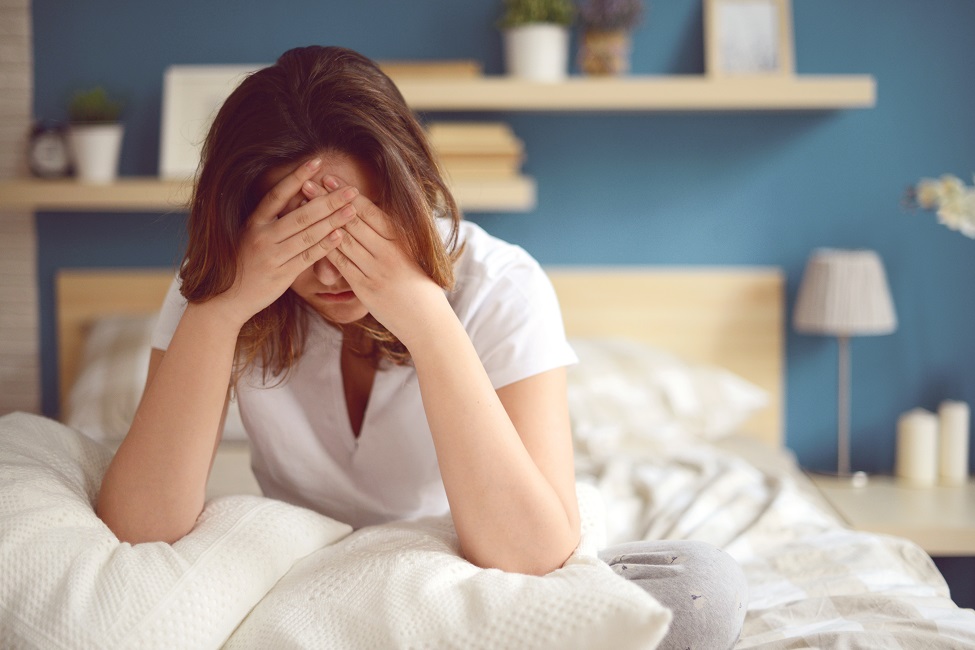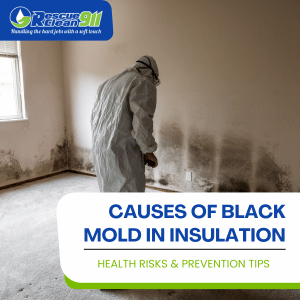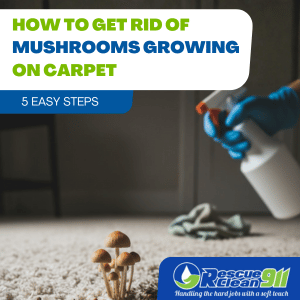Many homeowners worry about getting toxic black mold in their home, but what about brown mold? This type of mold is commonly found in homes, especially in areas with high humidity. How do you know if you have any brown mold species in your home, and what should you do about them? Knowing more about this type of mold can help you understand the kinds of problems it can cause and why it’s important to have it removed.
What Is Brown Mold?
Brown mold is a type of mold with a brown color that develops a fuzzy appearance as it gets thicker. Keep in mind that several species of mold fit this description, such as Ulocladium and Stemonitis. Some types of brown mold have a darker coloring that’s almost black. Other types have more of a feather-like appearance or form into blobs with enough thickness.
Although you can see brown mold with the naked eye, you’ll need lab testing to find out exactly which mold species is in your home or building. In some cases, you might have multiple types of brown mold in your home.
As with other types of molds, such as green mold and yellow mold, brown mold is a fungus that needs a combination of organic matter, oxygen, and moisture to thrive. Brown mold releases mold spores into the air, which helps it grow and spread. Although this usually isn’t a problem outdoors, it can become a problem indoors. Having mold removal and remediation done as soon as possible after finding mold is important in order to stop it from spreading.
Where Is Brown Mold Found?
Brown mold is typically found in humid conditions, since it needs moisture to survive. You’re likely to find it in areas that have excess moisture, such as a crawl space, unfinished basement, bathroom, or attic. This type of mold often grows on hard surfaces, such as wood. You might see it growing on ceilings, walls, and other similar surfaces in your home or building. The humid climate in South Florida makes it easier for brown mold to grow and spread indoors.
Signs of Brown Mold

How do you know if you have this kind of mold in your home building? You’ll notice a few signs that it’s around, but keep in mind that it also grows in dark, hidden areas, such as inside walls. In fact, you might have a serious mold problem in these areas before you even see any signs of it on walls or other visible areas.
What signs should you look for? Signs of a brown mold problem in your home or building can include the following:
- Brown spots on surfaces
- Dark patches on surfaces
- Wood rot or brown rot in severe cases
- Musty odors
You might notice musty odors before seeing any obvious signs of brown mold growth. These odors are present when mold is growing in hidden areas. Pay close attention to certain areas of your home where moisture can build up, including all of the following:
- Basements, especially unfinished basements
- Attics
- Laundry rooms
- Crawl spaces
- Kitchens
- Bathrooms
- HVAC systems
Common Causes of Brown Mold
What might cause brown mold in your home? You can have this type of mold grow due to a leaky pipe or other plumbing problems. Moisture can accumulate inside walls and other spaces, which provides the right environment for brown mold. Once it starts growing, it can quickly spread to other areas. Flooding from heavy rains and tropical storms can also put your home or building at risk of mold growth, especially if it’s an older property.
Poor ventilation in attics and other spaces can also cause brown mold to grow. Without enough ventilation, moisture builds up in these areas. Damp, dark environments, such as in crawl spaces, are common places for mold. These conditions make it easy for brown mold to grow and spread to multiple parts of your home or building.
Will Brown Mold Make You Sick?

Having brown mold around can cause health effects for some people. Breathing in mold spores might cause respiratory problems or allergy symptoms, such as a sore throat and runny nose. People with asthma or other respiratory conditions might face greater health risks from brown mold exposure. Certain individuals might also have a higher risk of becoming ill from this mold, such as the elderly, young children, and people with a compromised immune system.
The health risks from brown mold also depend on the species of mold you have. Some kinds of brown mold are linked to a higher risk of serious illness, such as Aspergillius and Cladosporium. These species of mold can cause severe illness in the respiratory system and other parts of the body. Keep in mind that you won’t be able to identify which species is in your home, and you might have more than one. If you find brown mold of any type, it’s important to have it removed promptly to reduce the risk of serious health effects.
How to Get Rid of Brown Mold
Although it’s important to eliminate brown mold as soon as possible, how should you go about it? Getting rid of mold growth involves removing it from the affected area and taking steps to prevent it from coming back. You might be able to clean off mold growing on bathroom tiles or other visible areas, but it’s not easy to make sure you’ve thoroughly eliminated the problem.
Trying to get rid of brown mold on your own can also lead to other issues. Wiping mold off walls and other areas can increase your chance of inhaling mold spores, which might cause health problems. When you clean mold from surfaces, you’re also at risk of spreading mold spores around. For example, mold spores on your clothing might end up in another part of your home. If conditions are right, these spores can cause another mold problem.
Mold can grow in areas of your home or building that are difficult to reach, such as inside air ducts or walls. You can also have brown mold growing in carpeting. Being able to remove mold from these areas or surfaces on your own might be impossible to do. Instead of handling it yourself, you should call South Florida mold removal and remediation experts. These professionals can effectively eliminate brown mold and lower your risk of having it come back.
Tips for Preventing Brown Mold
How can you lower your risk of having brown mold in your home or building? Taking care of problems that can lead to the right environment for mold growth can help. This means having plumbing problems, such as leaks, found and fixed right away.
High humidity can also lead to mold problems. Making sure your attic and other areas have good ventilation can help lower the risk of brown mold. Using exhaust fans in kitchens and bathrooms can prevent humidity and moisture from accumulating in these areas. You might use a dehumidifier in certain rooms or areas if needed.
Since brown mold often grows in dark areas, finding ways to let in natural light, if possible, can help prevent it. Open blinds on bathroom windows during the day, for example, to help reduce the risk of mold.
Brown Mold Remediation from Rescue Clean 911
When you need a reliable company to handle a brown mold problem, Rescue Clean 911 can help. We offer mold removal and remediation service for residential and commercial customers in South Florida. Our team knows how easily mold can take hold in homes and buildings with our local climate and humidity levels. We have the knowledge and expertise needed to eliminate mold.
What to Expect
What steps do we take to handle mold problems? We do the following to thoroughly get rid of brown mold:
- Set up the area
- Eliminate moisture sources
- Seal mold
- Eliminate mold damage
- Encapsulate the affected area
- Clean the area
- Make repairs and clean up
Our process starts with making sure the affected area is all set. This might involve sealing your HVAC system or taking other steps. After this, we eliminate any sources of moisture or water that can make mold growth worse. Keep in mind that we offer a water damage restoration service if needed. We then seal the area to stop mold spores from spreading. After this, we remove surfaces that have mold damage. Our next step is encapsulating the area with sealant or paint if needed. After this, we thoroughly clean the area with biocides, air monitoring, and HEPA vacuuming. Our last step is making repairs and cleaning up. Our team will ensure that your home or building is safe to reenter before we leave.
The Rescue Clean 911 Difference
![]()
What makes Rescue Clean 911 the top choice for mold removal and remediation? We offer 24/7 service, so you can call us at any time to deal with a brown mold problem. We understand that mold growth can quickly get worse if your home has been flooded, for example.
When you call us for help, we’ll provide you with a free estimate or quote on mold removal and remediation. This gives you an idea of what the final cost will be to have us eliminate brown mold from your home or building.
Our experts go above and beyond for each customer. In addition to getting rid of mold and making repairs, we can also give you advice on preventing mold growth to help keep you and your family or building occupants safe.
Call Rescue Clean 911 today to learn more about services and get a free quote.








